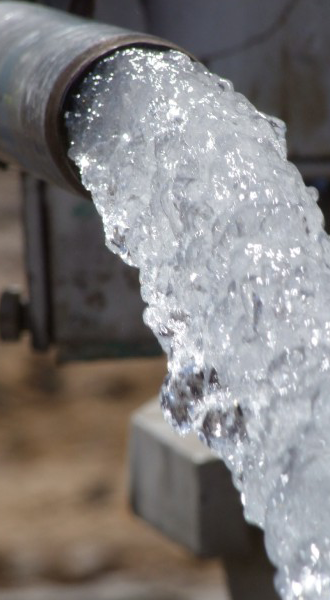
Al-Hajrain Water Project
For many harsh years, the people of Al-Hajrain lived in the hope that a day would come when benevolent individuals would help provide water for their land.
Sheikh Salem Bin Mahfouz was there to witness the people's needs firsthand and understand their struggles. After his passing, his sons continued his charitable legacy through the Al-Awn Foundation for Development, laying the foundation for the Al-Hajrain Water Project.
The first phase of the project began with channeling water from the natural springs of Al-Qizah, a nearby area, into storage ponds around the city.
In the mid-1970s, the second phase involved constructing a dam for the springs of Wadi Al-Ghobr, building an elevated reservoir on Jabal Al-Rukbah, and extending water supply networks to all areas while establishing an administrative structure for the project.
The third phase, in the mid-1980s, pushed the project further by drilling the first groundwater well, followed by another at the end of the decade. Water was then pumped from these wells into elevated reservoirs, ensuring water reached the highest peak of Jabal Al-Hajrain.
However, in the mid-1990s, during the fourth phase, the project began to decline due to operational difficulties and accumulated debts. Despite supplying fresh water to Al-Hajrain and its surrounding areas through three artesian wells, the system deteriorated. Water was pumped into a mountain reservoir (on the verge of collapse) and distributed through an aging network of pipes.
Recognizing the project’s vital importance—as the sole fresh water source for the city—a plan for rehabilitation and maintenance was developed. This fifth phase began in 2006, with Al-Awn Foundation stepping in to rescue, restore, and upgrade the project.
Today, the Al-Hajrain Water Project stands as one of the most significant social and developmental initiatives undertaken by Al-Awn Foundation for Development. It is structured as a strategic 20-year plan, implemented in multiple phases to ensure long-term sustainability. The project also incorporates solar energy to power water pumps, making it a sustainable model for the future.
Project Specifications:
- Number of reservoirs: 3
- Total storage capacity: 1,150 cubic meters
- Number of beneficiaries: 13,810 people
- Number of solar panels: 741
- Total power generation: 194 kW